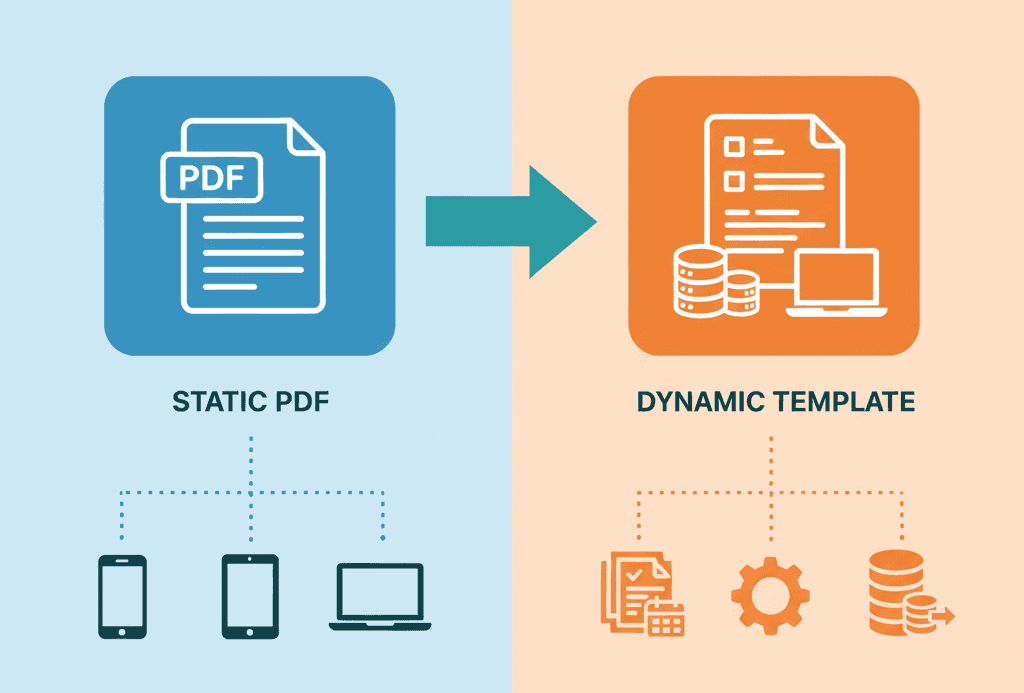Most businesses already have a library of PDFs. Invoices, contracts, application forms, or marketing materials. They look good, the layout is approved, and people are used to working with them. But there’s one big limitation: PDFs are static. If you want to use them in automated workflows, you often need to rebuild them in a template editor from scratch. That’s where importing an existing PDF comes in. With PDF Generator API you can take the documents you already have and turn them into dynamic templates in just a few clicks.

Why import your PDF instead of starting from zero?
Think of it as recycling your design. Instead of spending hours recreating tables, headers, and logos, you upload the original PDF and instantly have a template that matches your brand’s layout. All that’s left is to map the data fields you need. Names, addresses, invoice line items, date, and your static file is ready to power an automated workflow.
This approach not only saves time, it also reduces human error. Your accounting team won’t have to double-check formatting, your HR team won’t retype the same contract structure, and your customers will always receive documents that look exactly as you intended.
How the import works
When you upload a PDF through the Customer Portal, the system imports your file and processes it in one of two ways:
- If the PDF contains editable fields (form fields such as text boxes, checkboxes, or dropdowns), those will be detected and converted into editable elements inside the template editor.
- If the PDF does not contain editable fields, the entire page is uploaded as a static background. You can then manually add dynamic fields on top of that background in the editor.
This way, whether your PDF is an interactive form or just a flat design, you’ll always end up with a reusable template that can be enriched with data.
In practice, the process looks like this:
- Go to Templates in the Customer Portal.
- Select New Template → Import from PDF.
- Choose your file and let the system process it.

That’s it. Within seconds, your PDF is no longer just a file — it’s a template you can connect to data sources and generate new documents from.
Real-world use cases
You can start with our free templates, or create and import your own:
- Invoices: Upload your existing invoice design once, map the fields, and generate thousands of invoices automatically.
- Contracts: Keep your approved legal formatting intact while dynamically filling in client names and terms.
- HR forms: Onboarding documents or applications become reusable templates that save hours for your HR team.
- Reports: Reuse your branded report layouts and automatically populate them with the latest data.

Best practises
- Start with a clean, high-quality PDF — avoid scanned files if possible.
- If you use Word documents, convert them to PDF first before uploading.
- After importing, always test the template with sample data to confirm fields are mapped correctly.
- Keep the original file as a backup in case you need to make design changes later.

Conclusion
Importing existing PDFs is one of the quickest wins for document automation. It bridges the gap between the documents you already use and the workflows you want to build. Instead of reinventing layouts, you can take what works and make it smarter.

